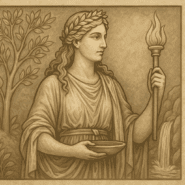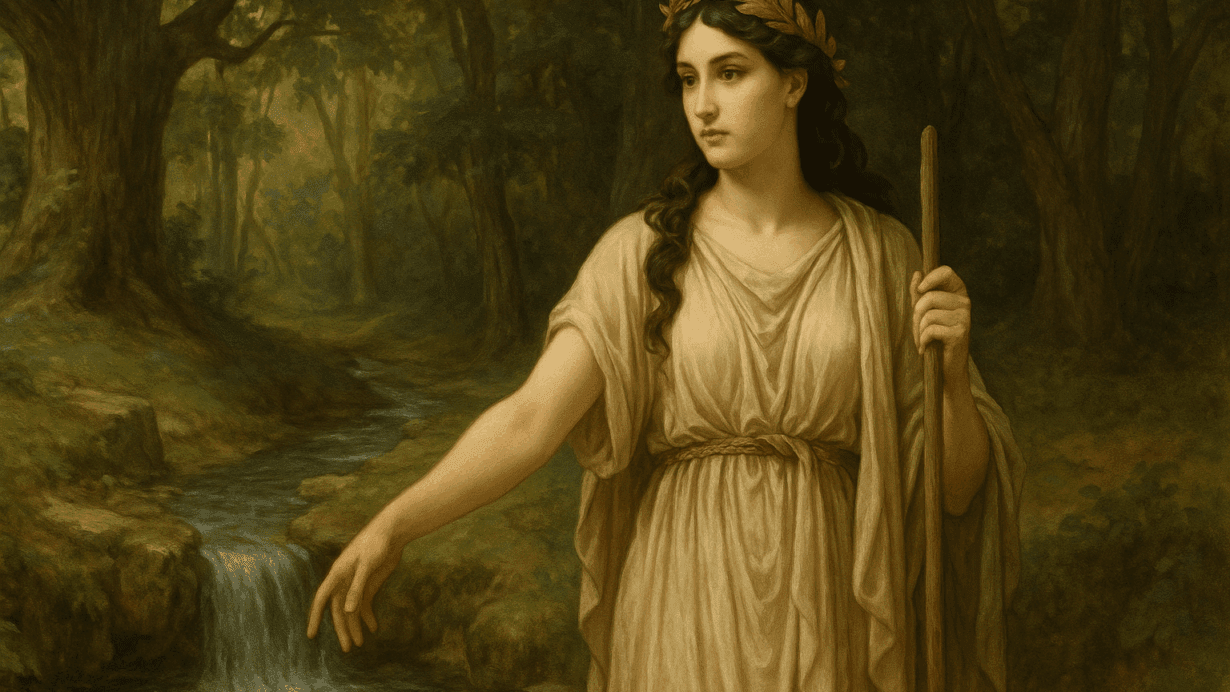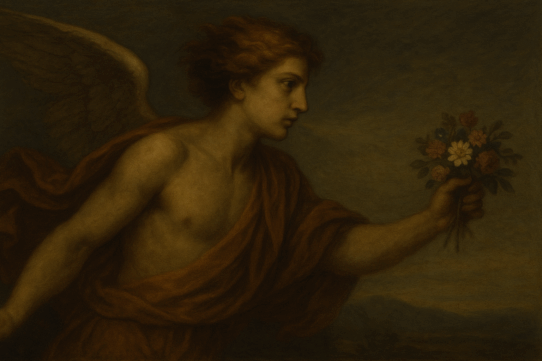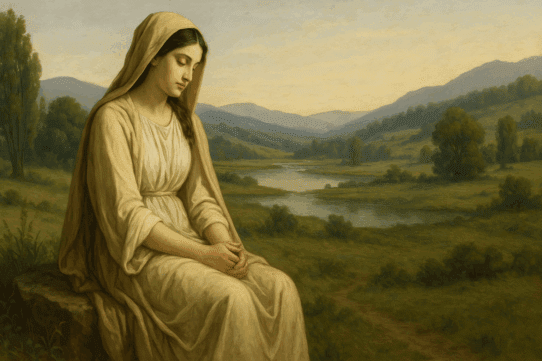Among the oldest and least understood deities of the Roman world stands Furrina, a goddess whose name once carried deep reverence but later faded into obscurity. She was the guardian of springs, the keeper of hidden waters, and a divine presence connected to both healing and mystery.
Though little survives of her myths, the fragments reveal a goddess rooted in the early religious memory of Rome: a figure tied to nature, secrecy, and the ancient relationship between people and the life-giving water beneath the earth.
This article explores what is known, what is suspected, and why modern readers are once again discovering Furrina as one of the most intriguing minor goddesses of Roman tradition.
An Ancient Goddess With Deep Roots
Furrina belongs to the category of very early Roman deities, those whose worship predated classical literature and even many of the later, more familiar gods. Her importance was once profound enough that she held a place among the dii indigetes — the original gods of the Roman people.
Because her cult existed before widespread written storytelling, many details of her personality and rituals have disappeared. Yet the pieces that remain show a goddess connected to:
- Freshwater springs
- Healing and renewal
- Sacred groves
- Hidden or subterranean places
- Ancient religious mystery
She represents a time when Rome’s spiritual life was deeply entwined with nature, long before elaborate temples and imported myths shaped the later pantheon.
Guardian of Springs and Hidden Waters
In early Roman religion, water was more than a necessity; it was a sacred force that sustained life, purified the body, and connected the living world to the divine. Furrina embodied this belief, serving as a divine guardian of natural springs.
Ancient writers suggested that her name was associated with “bubbling” or “gushing,” reflecting the motion of natural freshwater sources. Romans believed that springs were places where divine forces dwelled, and Furrina’s presence ensured that these waters remained pure, powerful, and protected from defilement.
Because her springs were seen as liminal spaces — where earth and water met — Furrina held a certain aura of secrecy. She watched over the quiet, shaded places where water surfaced from deep within the earth, a silent goddess of renewal and protection.
The Mysterious Sacred Grove on the Janiculum
One of the strongest pieces of surviving evidence about Furrina’s worship is her sacred grove on the Janiculum Hill in Rome. This grove was not a minor shrine; it was an official and ancient sanctuary, maintained for centuries.
The location reveals several important things:
- It was positioned away from the bustling center of Rome, reinforcing her connection to quiet, natural spaces.
- Groves were among the oldest forms of Roman sacred sites, indicating that her cult belonged to a pre-urban religious tradition.
- Springs likely flowed in or near the grove, consistent with her domain.
The grove shows that she was not a forgotten figure in her own time. She had a significant following during Rome’s early centuries, and her sanctuary remained part of Rome’s religious topography long after her worship declined.
Her Festival: The Furrinalia
Furrina was honored on July 25, during a festival called the Furrinalia. By the late Republic, few people understood the festival’s origins or the role she once played, which suggests that her cult had faded into obscurity. Still, the date remained on the Roman calendar, preserved out of respect for her ancient significance.
The existence of a dedicated festival means:
- She was once important enough to merit her own day of public observance
- Her ritual calendar was extremely old
- The Romans respected tradition even when meanings were lost
The Furrinalia likely involved water rituals, offerings of natural elements, and ceremonies conducted by the Flamen Furrinalis, a priest specifically assigned to her. The presence of a priesthood dedicated solely to Furrina reveals the depth of her ancient prominence.
Association With Healing and Protection
Because natural springs were widely believed to have healing properties, it is likely that Furrina’s influence extended to:
- Restoring health
- Cleansing the body
- Purifying the mind and spirit
- Offering relief during illness or heat
- Granting protection during travel
Many Roman healing cults connected water with divine intervention, and Furrina represents one of the earliest forms of this belief. Unlike later healing gods with elaborate temples, her power was accessed through the natural world itself.
A Goddess of Secrecy and Forgotten Lore
Furrina also carried associations with secrecy and forgotten knowledge. Latin authors described her cult as mysterious, and even by their time, few could explain her rituals. This sense of mystery was not a flaw but part of her identity.
In a city filled with bright temples and public ceremonies, Furrina remained tied to quiet places, natural waters, and traditions preserved by only a few. She embodies the idea that some deities were never meant to be fully understood but were honored because they represented the oldest spiritual experiences of the Roman people.
Why Furrina Matters Today
Modern readers and researchers are increasingly drawn to Furrina for several reasons:
- She represents Rome’s earliest religious layers
- She embodies a connection to nature that feels timeless
- Her story highlights how mythologies evolve, fade, and are rediscovered
- She offers a rare glimpse into pre-literary Roman spirituality
- She stands as a symbolic guardian of water, healing, and the quiet places of the world
At a time when water and the environment hold renewed global importance, Furrina’s presence in Roman mythology serves as a reminder of the deep respect ancient cultures held for natural resources.
Conclusion
Although Furrina’s myths have largely faded from the written record, her legacy is preserved through her sacred grove, her festival, and the echoes of her ancient worship.
She was a goddess of springs, healing waters, and hidden sanctuaries—a figure who existed long before the grand temples and imported legends of later Rome.
Her story invites us to look beneath the surface of mythology and rediscover the quiet, powerful forces that shaped the earliest beliefs of the Roman world.








